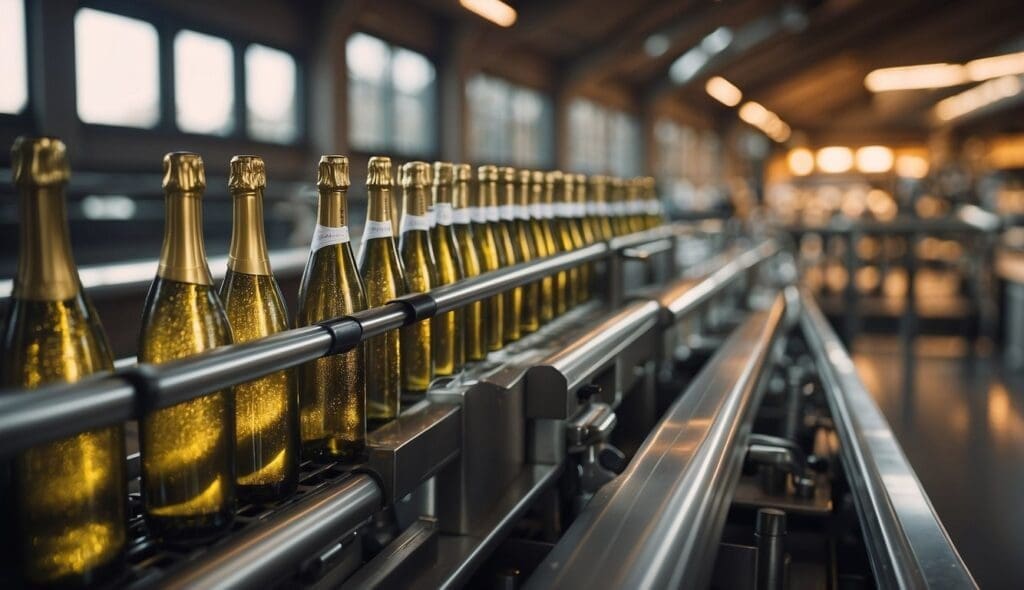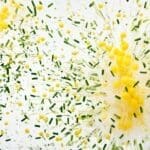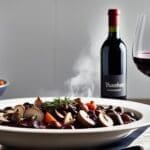This post may contain affiliate links. Please read my disclosure policy.
When it comes to sparkling wine, the choice between Prosecco and Cava can be a bit confusing. So what is the difference between Prosecco and Cava? Prosecco comes from Italy and is known for its light, fruity flavours, while Cava hails from Spain and often boasts a more complex profile. Each offers a unique drinking experience, making them both popular choices for different occasions.

You might prefer Prosecco if you enjoy a sweeter, more accessible sparkling wine. The bubbles are typically lighter, and it pairs well with lighter dishes or as an aperitif. Cava, on the other hand, is usually drier and more robust, often aged longer to develop deeper flavours, making it a fantastic companion to a rich meal.
If you’re considering an Australian varietal, look for local Prosecco or Cava alternatives that offer a fresh take on these traditional favourites. Both options can add an exciting twist to your wine selection and elevate your next gathering with friends and family.
Difference between Prosecco and Cava
Prosecco and Cava are two famous sparkling wines with distinct origins and grape varieties. Understanding their characteristics can help you choose the right sparkling wine for different occasions.
Origin and Geography
Prosecco hails from the Veneto region in North East Italy. It’s specifically linked to the area around the town of Conegliano and Valdobbiadene. This region benefits from a cool, temperate climate due to the nearby Dolomites and Adriatic Sea.
Cava originates from Spain, predominantly in the Catalonia region near Barcelona. The coastal Mediterranean climate in this region offers ideal conditions for growing the grapes used in Cava production.

Grape Varieties
Prosecco is primarily made from the Glera grape. These grapes produce a light, fruity sparkling wine with notes of peach, apricot, and melon. The Prosecco production process is typically less labour-intensive, employing the Charmat method, where secondary fermentation occurs in large stainless steel tanks.
Cava uses different grape varieties such as Macabeo, Xarello, and Parellada. These grapes contribute to a more complex and dry sparkling wine. Some Cava also includes Chardonnay for added richness and depth. The traditional method of bottle fermentation gives Cava its fine bubbles and aged characteristics.
Choosing between Cava and Prosecco often comes down to personal taste preferences and the specific occasion. Both offer unique flavours and aromas, making them versatile choices for various dishes and celebrations.
Production Methods
When comparing how Prosecco and Cava are made, it’s essential to look at secondary fermentation and the methods used for it. Each of these sparkling wines has a distinctive process that affects their flavours and bubbles.
Secondary Fermentation
Prosecco undergoes secondary fermentation using the Charmat method. This process takes place in large stainless steel tanks, which help retain the fresh, fruity notes typical of this wine. The secondary fermentation lasts for about 30 days, producing lower pressure and resulting in larger, less refined bubbles.
Cava, on the other hand, uses the méthode traditionnelle for secondary fermentation. This method occurs in the bottle, where yeast and sugar are added. The wine ferments again, and the yeast sediment, or lees, is left in the bottle for at least nine months. This process creates finer bubbles and adds complexity to the flavour.
Charmat vs Traditional Method
The Charmat method used in making Prosecco involves fermenting the wine in pressurised tanks. This technique preserves the wine’s fruity and floral aromas, making it lighter and more aromatic. The process is quicker and less expensive, leading to its popularity for producing large quantities.
In contrast, Cava’s traditional method involves fermenting the wine in individual bottles. This process, also known as the méthode champenoise, allows the wine to interact with the yeast at a high pressure, creating fine bubbles. It also develops more intricate flavours like toast and almonds due to the prolonged contact with the lees. This method, while more labour-intensive and costly, is considered superior for creating high-quality sparkling wines.
Whether you prefer the light bubbles and fruity notes of Prosecco or the refined taste and fine bubbles of Cava often depends on your personal taste and the occasion. Both wines offer unique experiences shaped by their distinct production methods.

Taste Profile and Characteristics
When comparing Prosecco and Cava, several key factors come into play, including the flavour and aroma, sweetness levels, and the effervescence and texture. Both have unique tastes and qualities that appeal to different palates.
Flavour and Aroma
Prosecco typically features light and fruity flavours with prominent notes of pear, apple, and citrus like lemon. It often has a fresh and lively character.
Cava, on the other hand, tends to be more complex. You might notice citrus and apple flavours as well, but also richer notes like toast, brioche, and yeasty tones resulting from longer aging periods.
Australian varietals of both wines offer a unique spin, with Proseccos from regions like Victoria providing especially vibrant fruit flavours.
Sweetness Levels
Both Prosecco and Cava come in a range of sweetness levels, from brut (dry) to doux (sweet). Prosecco classifications include Brut, Extra Dry, and Dry.
For Cava, the terms are similar but also include Extra Brut, Seco, and Demi-Sec. In general, Prosecco is known to be on the slightly sweeter side compared to Cava, which often leans more towards the dry spectrum.
Australian Prosecco often mirrors the sweeter styles, making it versatile for various taste preferences.
Effervescence and Texture
Effervescence, or the presence of bubbles, is another key aspect. Prosecco is made using the tank method, resulting in lighter, frothier bubbles. This contributes to its light and airy texture, making it refreshing.
Cava uses the traditional bottle fermentation method, leading to finer, more persistent bubbles and a creamier texture.
In Australian varieties, Prosecco’s bubbles are often more pronounced and lively, while Cava’s texture can be more refined due to its production method. This difference in production contributes significantly to the mouthfeel and overall drinking experience of each wine.

Choosing and Enjoying
Choosing and enjoying Cava and Prosecco involves thinking about their pairing with food, the correct serving temperature, and the price and value they offer. Understanding these aspects can help wine lovers make the best choice for their specific needs and occasions.
Pairing with Food
Cava and Prosecco each have unique flavour profiles that pair well with different types of food. Cava, which originates from the Catalonia region in Spain, tends to be more complex with earthy notes, making it ideal for heavier dishes such as paella, roasted meats, and cheeses.
Prosecco, on the other hand, comes from the Veneto region in Italy and has a lighter, fruitier profile. It pairs wonderfully with lighter dishes like seafood, salads, and antipasti.
For those who enjoy Australian wines, pairing a Prosecco from the King Valley with fresh seafood can bring out refreshing, crisp flavours. Meanwhile, an Australian Cava from a vineyard in Adelaide Hills makes an excellent match for grilled vegetables and charcuterie.
Serving Temperature
The temperature at which you serve your wine greatly affects its taste and enjoyment. Both Cava and Prosecco are best enjoyed when served chilled, but their ideal temperatures differ slightly.
Cava should be served around 5-7°C (41-45°F) to bring out its complex flavours and minerality. This cooler temperature helps highlight its nuance and depth, making it perfect for a more sophisticated palate.
Prosecco, being lighter and fruitier, is best served a bit warmer, around 6-8°C (43-46°F). This temperature helps enhance its fresh, bubbly character. Ensuring you serve your sparkling wine at the right temperature will maximise your tasting experience.
Price and Value
When it comes to price and value, Cava tends to be more affordable than Champagne but still offers a rich, complex flavour. This makes it a great choice for those looking to enjoy high-quality sparkling wine without breaking the bank. Quality Cava can be found in a wide price range, making it accessible to various budgets.
Prosecco, however, is often less expensive than both Cava and Champagne. It is made using a faster and cheaper production process, which keeps costs down. This means you can enjoy a delightful and refreshing Prosecco even when on a tight budget.
For Australian wine lovers, good quality Cava and Prosecco options are available from both large retailers and boutique vineyards, ensuring there’s something for everyone regardless of their budget.
Frequently Asked Questions
Prosecco and Cava differ in several important ways, including their production methods, flavour profiles, sugar content, and price. Understanding these differences can help you choose the right sparkling wine for your occasion.
What are the key differences in production methods between Prosecco and Cava?
Prosecco is made using the Charmat method where secondary fermentation occurs in large stainless steel tanks. This method is quicker and cheaper. Cava, on the other hand, undergoes secondary fermentation in the bottle using the traditional method, similar to Champagne, resulting in longer aging times and more complex flavours.
How do the flavour profiles of Prosecco and Cava typically compare?
Prosecco tends to have a lighter, fruitier profile with notes of green apple, pear, and melon. It is aromatic and fresh. Cava generally offers more complex flavours including toast, yeast, and minerals, due to its longer aging period on the lees.
In terms of sugar content, how do Prosecco and Cava differ?
Prosecco usually has a higher sugar content, making it sweeter. It is often classified as extra dry or dry. Cava is typically drier, with classifications such as brut and extra brut, signifying lower sugar levels.
Why might there be a price variation between Cava and Prosecco?
The production methods contribute to price differences. Cava’s traditional bottle fermentation is more labour-intensive and time-consuming, often leading to higher costs. Prosecco’s tank method is quicker and less expensive, generally making it more affordable.
Can you differentiate between the calorie content in Prosecco and Cava?
Prosecco typically contains more calories due to its higher sugar content, averaging around 90-120 calories per glass. Cava, being drier, usually has fewer calories, roughly 80-100 per glass.
What are the reasons behind Cava often being less expensive than Champagne?
Cava is often less expensive than Champagne because it is produced in Spain where production and labour costs are lower. Additionally, the less stringent regulations and simpler branding contribute to Cava’s lower price compared to Champagne.
User Review
( votes)Sip smarter, subscribe now!
Subscribe for gourmet tips, event updates, travel ideas, and a free e-book on Food Pairings. Start your journey to culinary and travel excellence!














